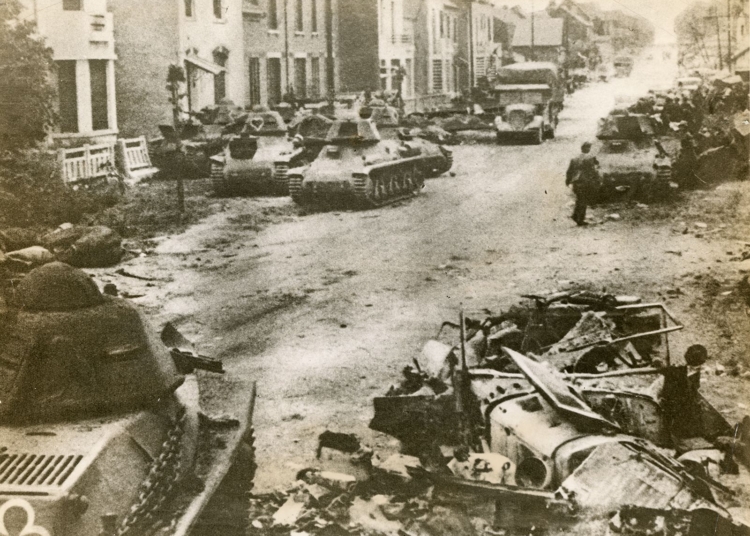The Blitzkrieg, a military strategy developed by Nazi Germany during World War II, revolutionized warfare tactics and had a profound impact on the outcome of the war. This article explores the origins and concept of the Blitzkrieg strategy, highlighting key components such as air superiority, mechanized forces, and close air support. It discusses the successful implementation of the Blitzkrieg strategy during the invasions of Poland, France, and other countries. The article also examines the psychological impact of Blitzkrieg on defending forces and how it redefined warfare by emphasizing speed and mobility. Lastly, it addresses the expansion of Germany and the lasting legacy of the Blitzkrieg strategy.
The Blitzkrieg: How Nazi Germany’s Military Strategy Shaped World War II
Introduction
The Blitzkrieg, meaning “lightning war” in German, was a military strategy developed and applied by Nazi Germany during World War II. This strategy, characterized by swift and overwhelming attacks, revolutionized warfare tactics and had a profound impact on the outcome of the war. In this article, we will delve into the details of the Blitzkrieg strategy and explore how it shaped the course of World War II.
Origins of Blitzkrieg
The origins of the Blitzkrieg can be traced back to the period between World War I and World War II, when Germany was developing new ways to avoid the stalemate that characterized trench warfare. Inspired by the mobility and speed of combined arms tactics, the Germans began experimenting with various components that would eventually form the basis of the Blitzkrieg strategy.
The Blitzkrieg Concept
The Blitzkrieg strategy aimed at overwhelming the enemy through the combined use of ground and air forces, concentrating their power in a specific location to break through the enemy lines. The key elements of the Blitzkrieg concept included surprise, speed, coordination, and the utilization of new military technologies.
Key Components of Blitzkrieg
There were several key components that enabled the successful execution of the Blitzkrieg strategy:
1. Air Superiority
Blitzkrieg relied heavily on air superiority, with the Luftwaffe providing close air support to the ground forces. The German air force played a crucial role in neutralizing enemy defenses, disrupting enemy communication lines, and conducting airstrikes on strategic targets to pave the way for advancing ground troops.
2. Mechanized Forces
The integration of tanks, armored vehicles, and mechanized infantry was another crucial aspect of the Blitzkrieg strategy. These highly mobile units allowed the Germans to rapidly exploit any breakthroughs achieved and maintain the element of surprise. The speed and firepower of these mechanized forces far exceeded that of traditional infantry units, enabling them to outmaneuver and overpower their opponents.
3. Close Air Support
Close air support, provided by the Luftwaffe, was vital in supporting the advancing ground troops. Constant communication between air and ground units allowed for precise airstrikes on enemy positions, as well as the suppression of enemy counterattacks. This coordination between air and ground forces was a key factor in the success of Blitzkrieg.
Blitzkrieg in Action
The Blitzkrieg strategy was first successfully employed during the invasion of Poland in 1939. The combined forces of the German army, air force, and armored units swiftly overwhelmed Polish defenses and resulted in the rapid conquest of the country. This victory showcased the devastating effectiveness of the Blitzkrieg strategy.
Following Poland, Germany employed the Blitzkrieg strategy in subsequent campaigns, including the invasions of France, the Low Countries, and the Balkans. In each case, the overwhelming speed and power of the German forces caught their opponents off guard and resulted in quick victories.
Impact on World War II
The Blitzkrieg strategy had a profound impact on the course of World War II:
1. Psychological Impact
The swift and overwhelming nature of Blitzkrieg attacks caused panic and disarray among the defending forces. Traditional defensive strategies were rendered ineffective against such lightning-fast offensives. This psychological impact played a significant role in undermining the morale of the opposing forces and contributed to German victories.
2. Redefinition of Warfare
The Blitzkrieg strategy revolutionized warfare tactics by emphasizing speed, mobility, and coordination. It marked a shift from the static, trench warfare of World War I to a more dynamic and fluid approach. The success of Blitzkrieg served as a wake-up call to other nations, leading to the development and evolution of their own mobile warfare tactics.
3. Expansion of Germany
The Blitzkrieg strategy allowed Germany to rapidly expand its territorial gains and establish control over vast areas. This expansionism set the stage for the global conflict of World War II and the subsequent struggle for supremacy in Europe.
Conclusion
The Blitzkrieg strategy employed by Nazi Germany during World War II transformed the face of modern warfare. Its rapid and overwhelming nature, combined with the effective use of air power and mechanized units, allowed Germany to achieve remarkable victories early in the war. However, as the war progressed, other nations adapted to the Blitzkrieg tactics, leading to more balanced warfare. Nonetheless, the Blitzkrieg remains a significant chapter in military history and a testament to the ingenuity and strategic thinking of the German military.













